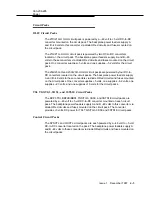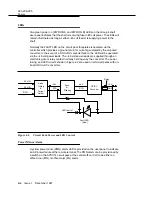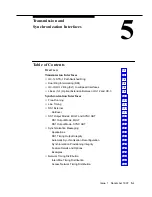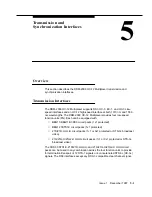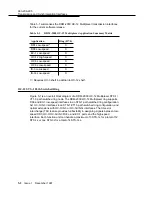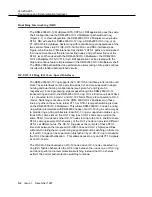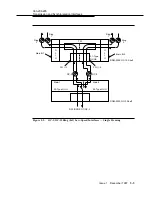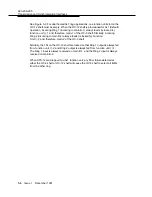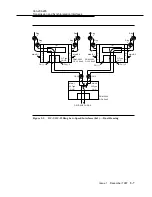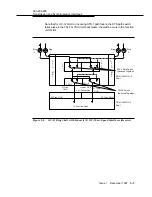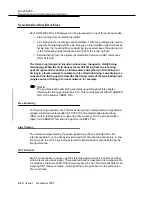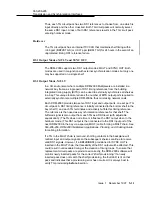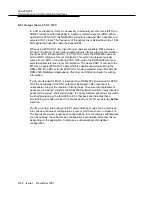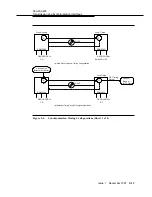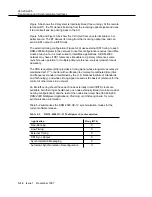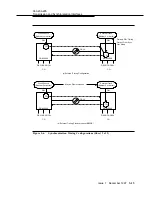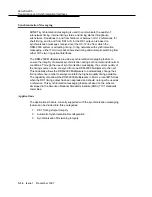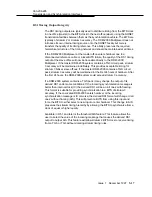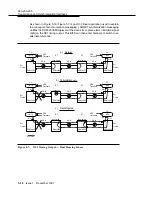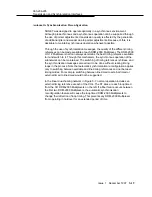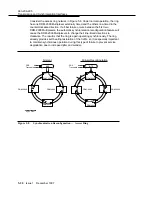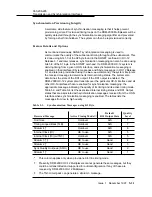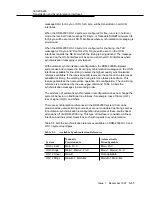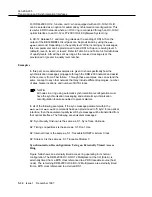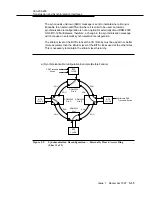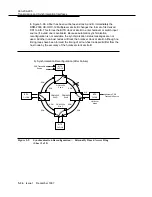
363-206-295
Transmission and Synchronization Interfaces
Issue 1
December 1997
5-11
Thus, each TG circuit pack has two DS1 references to choose from, one which is
input directly and the other cross-fed. Both TG circuit packs will normally select
the same DS1 input. A loss of both DS1 references results in the TG circuit pack
entering holdover mode.
Holdover
5
The TG circuit pack has an internal TCVCXO that maintains shelf timing within
±
4.6 ppm (BBF2B TGS) or
±
0.37 ppm (BBF4 TG3) for 24 hours in the event of an
unprotected timing DS1 reference failure.
DS1 Output Modes: MULT and SYNC OUT
5
The DDM-2000 supports two DS1 output modes: MULT and SYNC OUT. Both
modes are used in conjunction with external synchronization modes but only one
may be supported on a single shelf.
DS1 Output Mode, MULT
5
In a CO environment where multiple DDM-2000 Multiplexers are installed in a
network bay frame, a single pair of DS1 timing references from the building
integrated timing supply (BITS) can be used to externally synchronize all shelves
in a bay. This unique feature reduces the number of BITS output ports required to
externally synchronize multiple DDM-2000s, thus minimizing network costs.
Each DDM-2000 provides two sets of DS1 input and output ports, one set per TG
circuit pack. A DS1 timing reference is initially connected to the bottom shelf in the
bay (shelf 1) and each TG terminates and actively buffers this timing reference.
The reference is then used as a synchronization reference for that shelf. The
buffered signal is also output from each TG as a DSX level (with adjustable
equalization). (The TG does not retime or influence the DS1 output when in the
holdover mode.) This DS1 output is then connected to the DS1 input port of the
next DDM-2000 in the bay via a special (MULT) cable forming a MULT chain. See
363-206-200,
DDM-2000 Multiplexer Applications, Planning, and Ordering Guide,
for cabling information.
If a TG in the MULT chain is removed, shorting contacts in the backplane will
redirect input and output signals so the subsequent shelves continue to receive
valid DS1 signals. However, if a BBF2B/BBF4 provisioned for SYNC OUT is
inserted in the MULT chain, the traceability of the DS1 output will be affected. This
could result in untraceable timing or the creation of timing loops. To ensure that
replacement circuit packs are provisioned correctly, the DDM-2000 software will
monitor newly inserted packs for the correct “shelf provisioning.” If a newly
inserted pack does not match the shelf provisioning, the fault LED is lit on that
pack and indicates that a provisioning error has occurred. It is always best to
verify TG provisioning before insertion.

